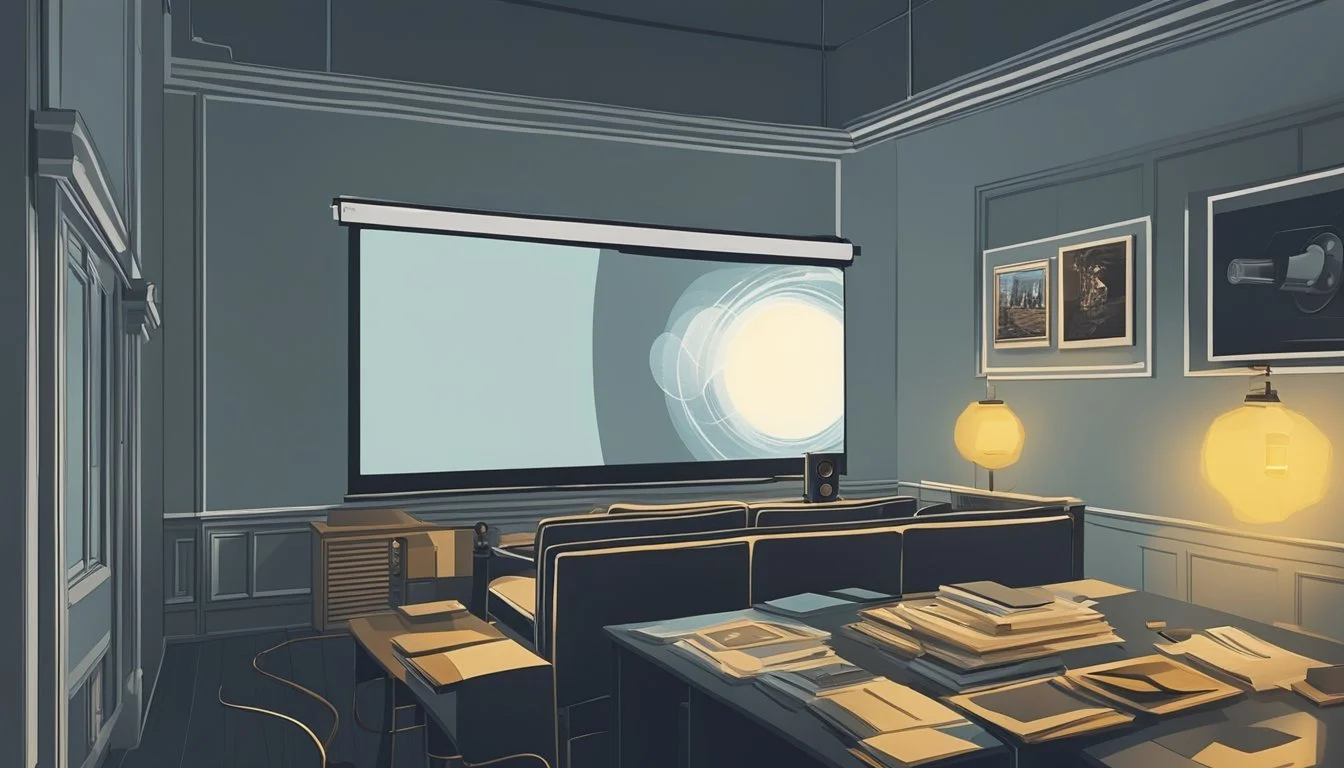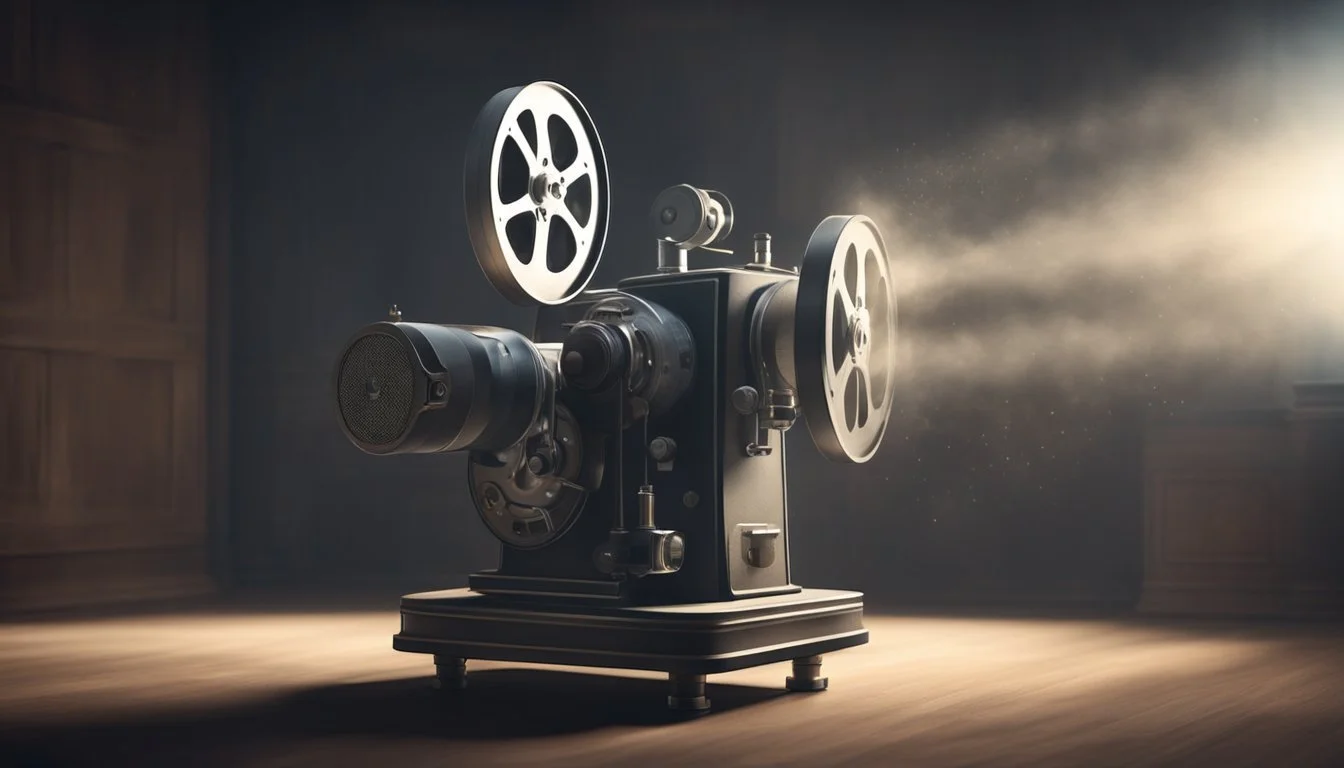Top Documentaries of 1964
Groundbreaking Films That Shaped the Genre
The year 1964 marked a significant period in documentary filmmaking, reflecting the era's social and cultural shifts. Documentaries from this time captured pivotal moments and explored thought-provoking subjects, providing viewers with unique insights into real-world events and issues.
These films not only documented history but also pushed the boundaries of the genre, experimenting with new techniques and storytelling approaches. Many 1964 documentaries continue to be regarded as influential works, appreciated for their artistic merit and historical significance. They offer a window into a transformative year, preserving important narratives for future generations.
1) Seven Up! (1964)
Seven Up! marked the beginning of a groundbreaking documentary series that would span decades. Directed by Paul Almond, the film interviewed 14 British children from diverse backgrounds, all aged seven.
The project aimed to explore the influence of social class on children's aspirations and development. Participants were asked about their views on life, education, and future plans.
Among the children featured were Tony, Bruce, Suzy, Nick, and Peter. Their candid responses provided a unique snapshot of British society in the 1960s through the eyes of its youngest members.
The documentary's format was innovative for its time, combining interviews with footage of the children in their daily lives. This approach allowed viewers to connect with the subjects on a personal level.
Seven Up! laid the foundation for future installments, which would revisit the same individuals every seven years. The series became a long-term study of British life and social change.
More information on Seven Up! (IMDB)
2) The Endless Summer (1966)
"The Endless Summer" is a groundbreaking surf documentary directed by Bruce Brown. The film follows surfers Mike Hynson and Robert August as they travel the world in search of the perfect wave.
Brown's narration brings a witty and sardonic tone to the silent footage. The soundtrack, featuring twangy guitar instrumentals by The Sandals, complements the visuals perfectly.
The documentary showcases the surfers' adventures across various locations, capturing the essence of surf culture in the mid-1960s. It explores the challenges faced by California surfers due to cold ocean currents during winter months.
"The Endless Summer" gained significant popularity upon its release. It is considered a pivotal film in surfing culture and has influenced generations of surfers and filmmakers alike.
The film's stunning cinematography and captivating storytelling helped introduce surfing to a wider audience. It remains a classic in the genre of surf documentaries.
More information on The Endless Summer
3) Le Joli Mai (1963)
Le Joli Mai is a French documentary film directed by Chris Marker and Pierre Lhomme. The film captures the spirit of Paris in May 1962, shortly after the end of the Algerian War.
Marker and Lhomme interviewed numerous Parisians, from various walks of life, creating a mosaic of perspectives on the city and its inhabitants. The directors shot 55 hours of footage, which they edited down to create the final product.
The film's title, which translates to "The Lovely Month of May," reflects the optimism of the first springtime of peace after years of conflict. It explores themes of everyday life, politics, and social change in post-war France.
Notable for its innovative approach to documentary filmmaking, Le Joli Mai combines street interviews with poetic narration. The film features voice-over work by Yves Montand and Simone Signoret, adding depth to its exploration of Parisian life.
Le Joli Mai stands as a significant work in the cinéma vérité movement, offering an intimate and multifaceted portrait of a city in transition. It provides valuable insights into the social and cultural landscape of 1960s Paris.
More information on Le Joli Mai
4) Time of the Locust (1966)
Time of the Locust stands as a powerful anti-Vietnam War documentary. Directed by Peter Gessner, the film utilizes archive footage to create a compelling protest against the conflict.
Gessner's work is notable for its early criticism of the war. It's considered one of the first documentaries to openly challenge U.S. involvement in Vietnam.
The film's strength lies in its visual impact. Rather than relying on statistics or political rhetoric, Time of the Locust presents stark images that expose the harsh realities of the war.
Critics praised the documentary for its effectiveness. Susan Braudy of New York Magazine called it "one of the best anti-Vietnam films made by underground filmmakers."
Time of the Locust remains significant in the history of documentary filmmaking. It exemplifies how the medium can be used to address pressing social and political issues.
More information on Time of the Locust
5) The Cool World
The Cool World (1963) offers a raw, unflinching look at life in Harlem's youth gangs. Directed by Shirley Clarke, this groundbreaking documentary-style film blends fiction and reality to create a powerful portrait of urban struggle.
At its center is Duke, a young member of the Royal Pythons gang. The film follows his daily life as he navigates the harsh realities of poverty, violence, and racial tension in 1960s Harlem.
Clarke's innovative approach brings an authenticity to the screen rarely seen before. She cast real Harlem residents alongside professional actors, lending the film a gritty realism that resonates deeply.
The Cool World's stark black-and-white cinematography captures the bleak urban landscape. Its jazz score by Mal Waldron perfectly complements the mood and setting of the film.
Critics praised The Cool World for its honest depiction of inner-city life. It stands as a significant work in the history of American independent cinema, offering valuable insights into a pivotal era of social change.
6) Nothing But a Man (1964)
"Nothing But a Man" is a groundbreaking American drama directed by Michael Roemer. The film stars Ivan Dixon as Duff Anderson, a railroad worker in Alabama, and Abbey Lincoln as his wife Josie.
Set against the backdrop of the civil rights movement, the movie explores racial discrimination and its impact on African American families. It portrays Duff's struggle to maintain his dignity in a hostile environment.
The film stands out for its realistic depiction of black life in the 1960s South. It avoids stereotypes and presents complex, fully-developed characters rarely seen in cinema at the time.
"Nothing But a Man" received critical acclaim for its honest portrayal of systemic racism. It was praised for its sensitive direction and powerful performances by Dixon and Lincoln.
The movie's unflinching look at racial issues was unusual for its era. It offers a poignant snapshot of a pivotal moment in American history.
7) To Be Alive! (1964)
To Be Alive! was a groundbreaking documentary that captivated audiences at the 1964 New York World's Fair. Directed by Francis Thompson and Alexander Hammid, the film employed innovative multi-screen projection techniques to showcase the universal experiences of human life.
The documentary explored the journey from childhood to adulthood across various cultures. It presented a visually stunning portrayal of shared human experiences, emphasizing the commonalities that unite people from different parts of the world.
To Be Alive! received critical acclaim and made history as the first non-theatrical commercial production to be recognized by the New York Film Critics Circle. The film's impact extended beyond the World's Fair, earning it an Academy Award for Best Documentary Short Subject in 1965.
Commissioned by S.C. Johnson & Son, the film was shown at the company's pavilion during the fair. Over five million visitors experienced the 18-minute documentary, making it one of the most popular exhibits at the event.
The film's success led to its inclusion in the United Nations Pavilion at the 1967 International and Universal Exposition in Montreal, further solidifying its cultural significance.
Learn more about To Be Alive! on Wikipedia
8) Mondo Cane 2 (1963)
Mondo Cane 2 continued the shock documentary tradition established by its predecessor. Directed by Gualtiero Jacopetti and Franco Prosperi, the film explored bizarre and controversial human behaviors from around the world.
The documentary presented a series of vignettes showcasing unusual cultural practices, rituals, and phenomena. It aimed to provoke strong reactions from viewers through its graphic and often disturbing content.
Narrated by Stefano Sibaldi, Mondo Cane 2 featured scenes of religious penitents, primitive customs, and what the filmmakers considered perverse behaviors. The film's approach was designed to shock and surprise audiences.
Critics and viewers had mixed reactions to Mondo Cane 2. Some praised its daring approach, while others criticized it for sensationalism and potential exploitation of its subjects.
The film's legacy lies in its contribution to the "mondo" genre of documentaries, which focused on taboo subjects and cultural oddities. It remains a controversial piece of cinema history.
9) Bitter Ash (1963)
The Bitter Ash is a Canadian drama film directed by Larry Kent. Shot in Vancouver, it stands as one of the first narrative feature films produced in the city.
The film follows Des, an unhappy blue-collar worker portrayed by Alan Scarfe. Des becomes entangled in Vancouver's counterculture scene, where he clashes with an intellectual named Colin over Colin's wife Laurie.
Larry Kent, who emigrated from South Africa to Canada in 1957, wrote and directed The Bitter Ash while studying at the University of British Columbia. The film showcases Kent's independent filmmaking style, blending existential themes with a pre-hippie aesthetic.
Despite its low-budget origins, The Bitter Ash demonstrates remarkable craftsmanship. The film was shot on 16mm and later underwent a 4K restoration, preserving its unique visual quality.
The Bitter Ash gained recognition in later years, screening at retrospectives including the 2012 Toronto International Film Festival. It remains a significant work in Canadian independent cinema.
More information on The Bitter Ash
10) The World of Henry Orient (1964)
The World of Henry Orient, directed by George Roy Hill, is a charming coming-of-age comedy-drama set in New York City. The film stars Peter Sellers as Henry Orient, an eccentric and not particularly talented concert pianist.
The story focuses on two 14-year-old schoolgirls, Valerie Boyd and Marian Gilbert, who develop a crush on Orient. They begin following him around the city, inadvertently disrupting his attempts to seduce a married woman.
Peter Sellers delivers a memorable performance as the self-absorbed Henry Orient. The film also features strong supporting roles from Angela Lansbury and Tom Bosley as Valerie's parents.
Despite being marketed as a comedy, The World of Henry Orient explores deeper themes of adolescence, friendship, and family relationships. The film received critical acclaim for its sensitive portrayal of teenage girls and their world.
George Roy Hill's direction captures the energy and excitement of 1960s New York City. The movie's blend of humor and heart continues to resonate with audiences decades after its release.
Cinematic Trends of 1964
1964 marked a year of significant artistic and technical evolution in cinema. Filmmakers embraced new storytelling techniques and cutting-edge technology to capture the changing social landscape.
Influence of Social Movements
The civil rights movement and growing counterculture heavily influenced films of 1964. Directors tackled themes of racial inequality, war, and social change. Stanley Kubrick's "Dr. Strangelove" used dark satire to criticize Cold War politics and nuclear proliferation.
Sidney Poitier's groundbreaking role in "Lilies of the Field" earned him an Oscar, highlighting shifting racial attitudes. The Beatles' film "A Hard Day's Night" captured youth culture and Beatlemania, revolutionizing the music film genre.
Italian neorealism continued to inspire filmmakers like Pier Paolo Pasolini, whose "The Gospel According to St. Matthew" blended religious themes with social commentary.
Technological Advancements in Filmmaking
1964 saw rapid technological progress in filmmaking. The use of lightweight cameras and portable sound equipment allowed for more dynamic shooting styles and on-location filming.
Technicolor introduced improved color processing techniques, enhancing visual aesthetics in films like "Mary Poppins." This Disney classic also pioneered new special effects, seamlessly blending live-action with animation.
Widescreen formats gained popularity, with films like "My Fair Lady" utilizing 70mm film for stunning visual clarity. Sound design advanced significantly, as exemplified in the intricate audio landscapes of "Goldfinger."
These innovations enabled filmmakers to push creative boundaries and deliver more immersive cinematic experiences to audiences worldwide.
Impactful Filmmakers
1964 saw several influential documentary filmmakers produce groundbreaking works that shaped the genre. These directors and producers pushed creative boundaries and tackled important social issues through their innovative approaches to non-fiction storytelling.
Pioneering Directors
Frederick Wiseman released his debut documentary "Titicut Follies" in 1964, launching a prolific career. The film's unflinching look at a mental hospital sparked controversy and legal battles. D.A. Pennebaker gained prominence with "Lambert & Co.", which captured behind-the-scenes moments with jazz vocalist Dave Lambert.
Richard Leacock continued developing direct cinema techniques in "Happy Mother's Day". His observational style influenced a generation of documentarians. Albert and David Maysles produced "What's Happening! The Beatles in the USA", following the band's first American visit.
Notable Producers
Robert Drew produced several influential political documentaries in 1964. "Faces of November" provided an intimate look at JFK's funeral. Drew's company also released "The Chair", exploring capital punishment through a death row inmate's case.
Willard Van Dyke oversaw production of "To Be Alive!" at Johnson Wax. The innovative multi-screen film later won an Academy Award. At National Geographic, producer Robert Capa supervised "Americans on Everest", chronicling the first successful U.S. expedition to the summit.








